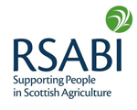SOIL
Fodder beet has been grown in a wide range of soils. However, it is best grown in a light to medium soil in a free draining field. A pH of 7 is ideal.
SEEDBED
A firm, fine tilth is ideal with as little moisture loss as possible in the spring. Soil temperature of 5°C is required before sowing. Sowing too early in cold conditions can lead to bolting.
Seed should be precision drilled to a depth of 2.5/3cm.
FERTILISER
Nutrition is essential and fodder beet is a demanding crop. Apply two thirds of N with all of P and K to seedbed. Apply one third of N 2 months after sowing. Trace elements are also important to fodder beet especially Boron and Manganese.
REQUIREMENTS:
With slurry:
N 100kgs/acre
P 50kgs/acre
K 50kgs/acre
Without slurry:
N 125kgs/acre
P 75kgs/acre
K 150kgs/acre
WEED CONTROL, DISEASE AND PESTS
Good weed control is required to achieve the full yield potential. The use of a pre-emergence herbicide should be routine. The seeds are treated with fungicide and insecticide for protection through establishment. The crop can be attacked by several pests and therefore regular monitoring is essential. Major pests are flea beetle, slugs, springtails, symphalids and beet cysts.
HARVESTING
Many of the varieties can be grazed in situ which will give the benefit of utilising the tops as well as the root. If lifting, it is important to remove the tops down to the base of the leaf petioles. Keep soil contamination to a minimum.
FEEDING
If lifted - fodder beet can be fed whole to cattle over 250kg. Otherwise chop before feeding.
If feeding indoors a maximum of 8-10kg of beet/head/day with a readily available source of fibre. The beet would likely make up around 60% of DM intake per day. If grazed a maximum of 70% of DM intake per day.
It is important to introduce fodder beet gradually with a starting point of 2kg DM intake per day/head and adding another 1kg DM intake every 2 days/head up to the maximum of 8-10kg.




